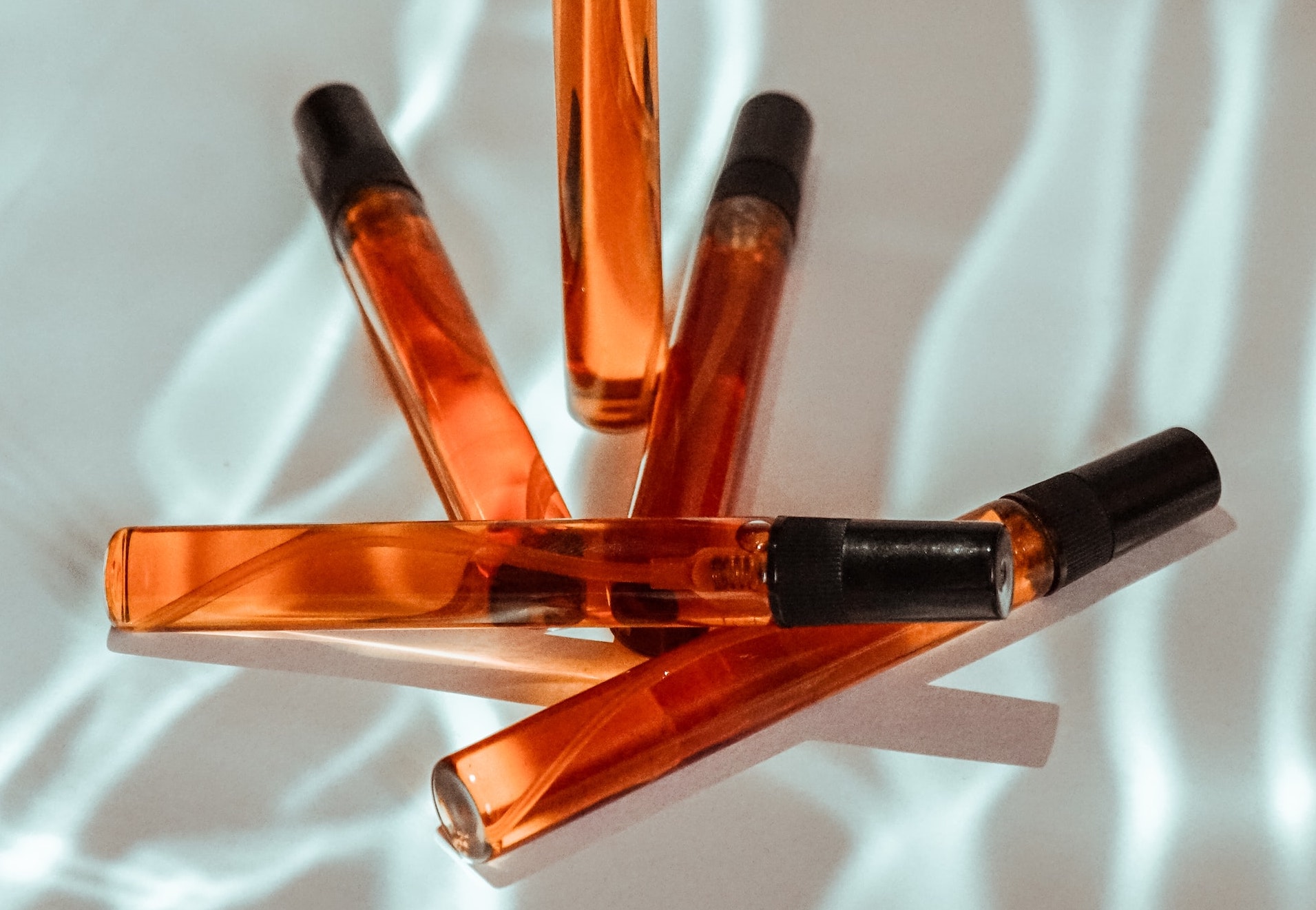BACKGROUND
Fragrance substances are organic compounds with characteristic, usually pleasant, odours. These substances are widely used in perfumes and perfumed cosmetic products, but also in detergents, fabric softeners and other household products. Fragrance substances are commonly linked to contact allergies. These allergies are life-long altered specific reactivities in the human immune system. Contact allergy comprehends two phases: induction and elicitation phase. The induction phase, also called sensitization, comprehends the activation of the immune system, and during this phase, no clinical symptoms are developed. Re-exposure to a sufficient amount of the substance, or a cross-reacting allergen can provoke the initiation of the elucidation phase and cause clinically visible allergic symptoms like eczema (allergic contact dermatitis). Restriction limits can be deemed sufficient to prevent allergic reactions. However, people that are already sensitized may develop symptoms when exposed to lower concentrations of an allergen than the maximum permitted levels.
According to Article 19 of the Cosmetics European Regulation (EC) No 1223/2009, a cosmetic product is to be made available on the European Union market only where a list of ingredients is indicated on its labelling. Article 19 informs that perfume and aromatic compositions and their raw materials are to be referred by the terms “parfum” or “aroma” in the list of ingredients. This list must be completed by substances that need to be mentioned under requirement on column “Other” in Annex III (List of substances which cosmetic products must not contain except subject to the restrictions laid down) of the European Cosmetics Regulation. Currently, 25 fragrance allergens are listed in Annex III, entries 67 to 92, which means that these allergens must be indicated in the label of the cosmetic product when their concentration exceeds 0.001% in leave-on products or 0.01% in rinse-off products.
In response to the request of the European Commission for an update of the list of individually labelled fragrance allergens, the Scientific Committee on Consumer Safety (SCCS) published an opinion in 2012, identifying 56 additional fragrance allergens, which have clearly caused allergies in humans. Additionally, fragrance substances such as prehaptens and prohaptens, that can be transformed to known contact allergens via air oxidation or bioactivation, should be treated as equivalent to fragrance allergens and be subject to the same restrictions and other regulatory requirements.
WHAT’S NEW?
On September 15, 2022, the World Trade Organization (WTO) was notified by the European Commission about new amendments to the European Cosmetic Regulation, regarding the labelling of fragrance allergens in cosmetic products. In this way, an obligation to individually label those fragrance allergens should be introduced in Annex III to Regulation (EC) No 1223/2009, with the same restrictions followed by already listed allergens. Examples of the allergens expected to be included in Annex III are: Benzaldehyde (CAS number: 100-52-7), Camphor (CAS number: 76-22-2/ 21368-68 -3/ 464-49-3/ 464- 48-2) and Menthol (CAS number: 89-78-1/ 1490-04-6/ 2216 -51-5). Certain entries of Annex III are also expected to be updated.
Regarding these new restrictions, transition periods will be provided for beauty brands to make the necessary adjustments to the cosmetic products and labels, as well as to withdraw from the market non-compliant cosmetic products. The proposed date of adoption is expected to be in the first half of 2023 and the propose date of entry in force 20 days from the publication in the Official Journal of the European Union. It is expected a period of 3 years, starting after the entry in force of the new regulation, for cosmetic products containing substances that do not comply with the restrictions not be placed on the European Union market, and a period of 5 years for non-compliant products not to be made available on the European Union market.
References:
1. SCCS opinion on fragrance allergens in cosmetic products (2012).
2. European Comission, Final report: Impact assessment study on fragrance labelling on cosmetic products (2020).
3. Regulation (EC) No 1223/2009 of the European Parliament and of the Council of 30 November 2009 on cosmetic products.
4. Committee on Technical Barriers to Trade – Notification – European Union – Fragrance allergens in cosmetic products. G/TBT/N/EU/924. 15 September 2022.














